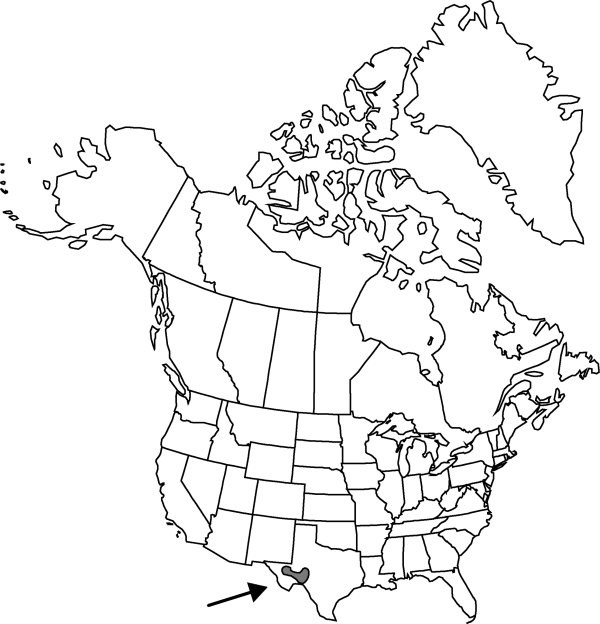Opuntia strigil
Proc. Amer. Acad. Arts 3: 290. 1856.
Shrubs, erect to sprawling, to 1 m. Stem segments not easily detached, green, flattened, obovate to circular, 10–17 × 8.5–14.5 cm, nearly smooth, glabrous; areoles 7–10 per diagonal row across midstem segment, oblong to elliptic, 3–5 × 2.5–3.5 mm; wool yellow-brown to brown, aging gray. Spines 5–8(–10) per areole, best developed in distal areoles, usually reflexed, spreading or some erect in marginal areoles, red-brown (often with darker annular rings) with yellow tips, aging blackish, straight or weakly curved, not or slightly flattened near bases; central spines 1(–2), much longer and stouter, ± acicular, 10–40 mm. Glochids crowded in crescent at adaxial edge of areole and subapical tuft, radiating and well developed in old stem segments, yellow, to 3 mm. Flowers: inner tepals cream to lemon yellow, orangish abaxially on midvein areas, broadly spatulate-apiculate, 20–30 mm; filaments cream-yellow; anthers pale yellow; style pale cream; stigma lobes pale greenish yellow. Fruits red, subspheric, 15–28 × 12–23 mm, fleshy, glabrous, spineless; umbilicus 4–5 mm deep; areoles 24–36. Seeds tan, subcircular to reniform, flattened, warped, 3–4 × 2.7–3.5 mm, 2 mm thick; girdle protruding 0.5–0.8 mm. 2n = 22, 44.
Phenology: Flowering spring (Apr–May).
Habitat: Desert scrub, limestone hills and plains
Elevation: 900-1400 m
Discussion
Opuntia strigil is reminiscent of a brown-spined form of O. chlorotica.
Selected References
None.
